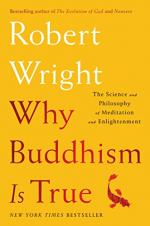
|
The Matrix
The author references this film as a metaphor for the illusions of daily life. Just as the hero of the film dispels the illusions of his life, so does the practitioner of meditation.
Chocolate Bars
These objects are used as an example in the book to symbolize a lack of self-control and justification for indulging in desire.
Powdered Doughnuts
These objects are depicted to symbolize illusory urges perpetrated by natural selection. While constant consumption of these objects can be detrimental to one's physical and mental state, most people still indulge in them.
Buzz Saw
The author uses this object's noise as an example of how one can transform one's perception of something by letting go of preconceived connotations about the object. He describes hearing this sound during a meditation retreat and achieving a state where it was not bothersome, but enjoyable.
Tape Measure
The author presents...
|
This section contains 332 words (approx. 2 pages at 300 words per page) |

|




